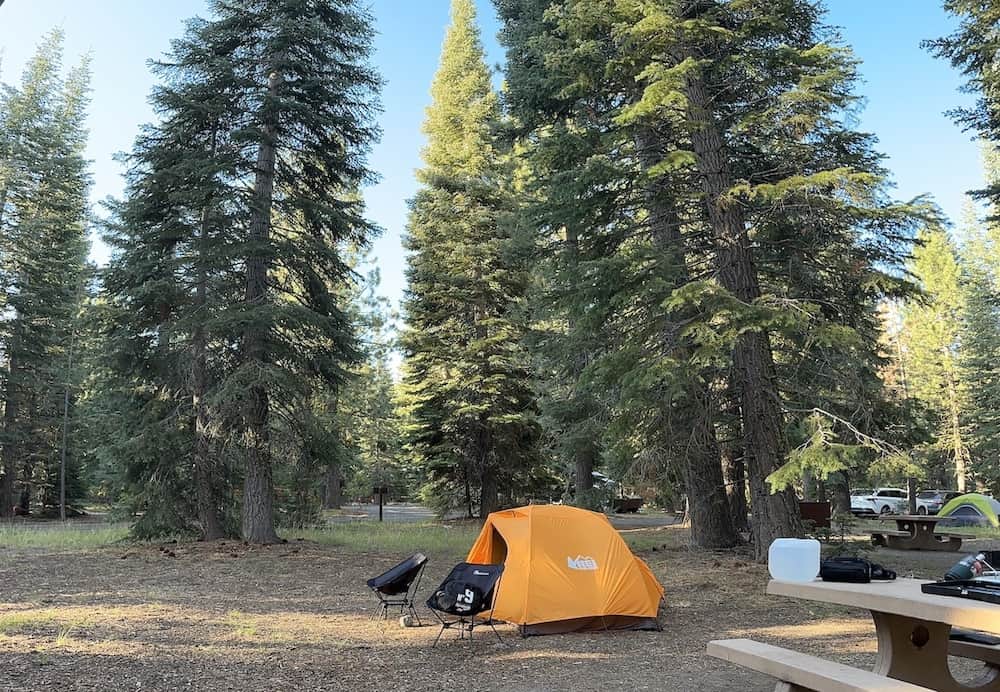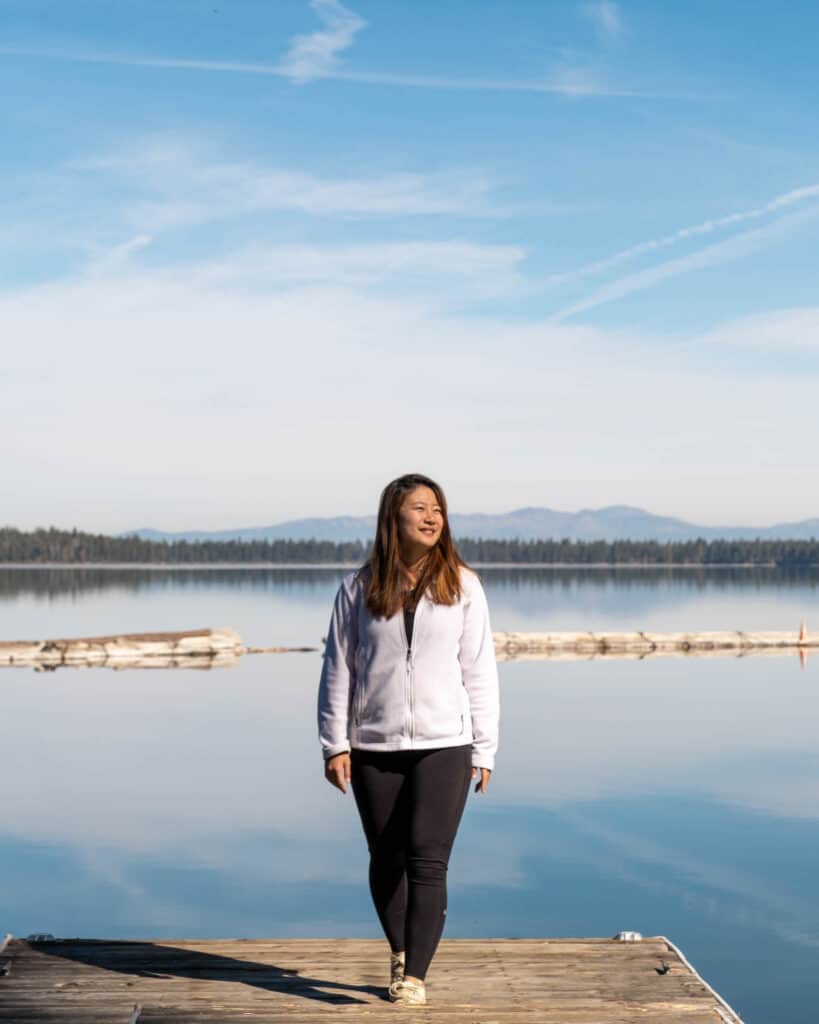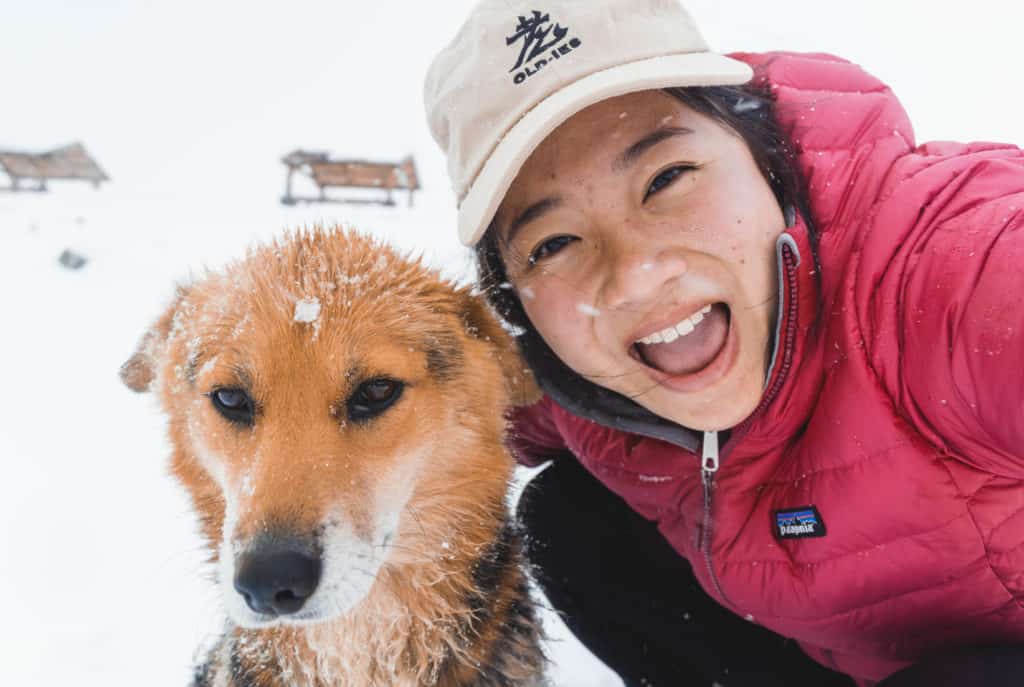How To Choose Cold Weather Camping Gear For 2025
Isn’t it great if you can go camping whenever you want? Having the essential gear for cold weather camping is key to enjoying the outdoors at any time of the year. This way, nothing’s stopping you from camping at your favourite National Park during shoulder season.
Cold weather camping is not just limited to winter. It usually starts to get cold from fall onwards, which is when most people gradually stop going camping. However, outdoor adventures shouldn’t stop there because there’s much more to see as the landscape changes with the seasons.
My mistakes with cold weather camping gear:
The first camping trip I went on was during winter, at a beautiful beachside campground on Catalina Island. I was shivering almost half the night, and I was so confused about why my sleeping bag didn’t feel warm. California has so many amazing winter camping sites, and I was determined to make it work.
After that, I bought a warmer sleeping bag and brought it to Yosemite for a spring break California road trip. It was effectively late winter and temperatures were still below freezing at night. Even with a foam sleeping pad, I was freezing and I just couldn’t figure out what’s wrong. Perhaps I’m just a really cold sleeper?
After doing some more research and broadening my options to consider better rated gear, I think I’ve gotten much closer to my ideal cold weather camping set up. In this article, I’ll be sharing what I’ve learnt about how to choose cold weather camping gear so that you can actually enjoy shoulder season camping.
This article uses affiliate links where I make a small commission if you make a purchase through my links, at no additional cost to you. As an Amazon Associate I earn from qualifying purchases.
Recommended cold weather camping gear for up to 30 F
For a quick summary and easy reference list, here are all the cold weather camping gear we have used. I’ve also included both the upgraded and budget versions I’ve tried. I’m a relatively cold sleeper and this gear setup has brought me and Merrick through 30 F (-1 C) camping temperatures.
Tent:
REI Co-op Half Dome SL 2+ Tent with Footprint

Easy to set up, lightweight and versatile for all kinds of camping trips.
Coleman Sundome Camping Tent

Budget camping tent that can withstand wet weather, suitable for when you’re starting out.
Sleeping bag or quilt:
Paria Thermodown 15 Down Quilt

Stay warm during your camping adventures with a quilt that allows you to toss and turn.
Sleeping pad:
NEMO Tensor Ultralight Insulated Sleeping Pad

Adds comfort and insulation for a good night’s sleep with r-value of 4.2.
REI Co-op Helix Insulated Air Sleeping Pad

Value-for-money sleeping pad that’s comfortable and has r-value of 4.9.
Layered clothing:
If this is your first time camping, here are some tips on how to plan a camping trip and ways to get started. I also have a handy camping starter kit that include other things you might need for cooking, chilling around the fire, and more.
Camping gear, especially your sleep system, should be customised to you. Read on to see if you need to make any tweaks or changes to suit the needs of your expected cold weather camping environment.
I’ve also created a video featuring my go-to camping packing list – check it out below:
1. Tent
What makes a tent good for cold weather?
Depending on your definition of cold weather, the type of tent may not really matter that much. However, if you are going to be in a place with heavy snow storms and wind, do consider these features when choosing a tent.

Durable material and 4-season design: A 4-season tent is specifically designed for all-year-round use and provides better insulation against cold temperatures. The tent should be made of durable, weather-resistant materials to withstand harsh conditions, including snow and wind.
Ventilation: While insulation is crucial, proper ventilation is equally important to prevent condensation inside the tent, which can make things wet and cold.
Snow Skirts: These are flaps around the base of the tent that help prevent snow from blowing inside.
Do you need a 4-season tent?
For cold weather camping, especially in snowy conditions or at high altitudes, a 4-season tent is highly recommended. It provides better insulation and is designed to handle the weight of snow. However, if you’re camping in milder cold conditions, a 3-season tent may suffice.
I have used both the Coleman Sundome tent and the REI Co-op Half Dome SL tent for cold weather camping (up to 30 F). The Coleman Sundome tent has held up decently in the rain, and the REI tent was an upgrade for us to have something more lightweight. Both would work just fine as 3-season tents.

Why your tent may be wet in the morning
Don’t be alarmed if you see some water droplets inside the walls of your tent. Although it looks like your tent might be leaking rainwater, condensation is a common cause of a wet tent interior in cold weather.
This happens when warm air from our breath meets the cold tent walls, and moisture condenses to form droplets. You can avoid excessive condensation by ensuring proper ventilation.
2. Sleeping bag
How are sleeping bags temperature ratings determined
Depending on the brand, the temperature ratings are not always easy to compare as they may not be referring to the same thing. It is important to check the product details to find out if the temperature rating is meant for the comfort, limit or survival temperature range.
When I first started shopping for sleeping bags, I thought that I could rely on the temperature rating that is being advertised. After a few cold nights, I realised that there are a few factors to keep in mind when comparing temperature ratings.
Are the sleeping bags tested using the EN/ISO standard?
Most of the bigger and more established brands use EN/ISO testing standards, and have increased adoption over the last few years. If there’s no mention of it on the product description, you can assume that the temperature rating is just the brand’s best estimate.
Many of the generic sleeping bags you find on Amazon are probably going to have this issue where you don’t know the true comfort temperature rating. Hence, you should aim for a much lower temperature rating since you won’t know the actual temperature rating until you test it out yourself. I recommend giving about 10-15 F buffer just in case.
Assumptions when testing sleeping bag temperature ratings
In addition, not many people realise that the EN/ISO standard involves the use of a sleeping pads with r-value of 4 to 5 when testing a sleeping bag’s temperature rating. We’ll talk more about r-ratings later, but this just means that your sleeping bag may perform differently if you don’t have a well-insulated sleeping pad. In other words, your entire sleep system setup matters – not just the sleeping bag.
Comfort vs Limit vs Survival
Make sure you’re checking the comfort temperature rating when you’re shopping for sleeping bags.
Comfort: The temperature at which a “cold sleeper” can sleep comfortably.
Limit: The lowest temperature at which a “warm sleeper” can sleep without discomfort.
Survival: The temperature at which a sleeping bag prevents hypothermia but doesn’t guarantee comfort.
Men’s vs women’s sleeping bags

Since women tend to sleep colder, it’s common for women’s sleeping bags to be advertised at the comfort temperature rating. On the other hand, men’s or unisex sleeping bags are usually advertised at the limit rating. To account for this, I’ll add on about 5-10 F of temperature difference when shopping for a unisex sleeping bag.
How warm should a sleeping bag be for cold weather camping
Choose a sleeping bag with a temperature rating about 10 F lower than the expected low temperatures. Do also consider factors like insulation type (comfort vs limit rating), personal preferences (cold vs warm sleepers), and clothing layers.
Here’s an example to piece it this information together. If you’re a cold sleeper planning to camp in 30 F temperatures, I recommend getting a sleeping bag that’s rated for 15 F or lower.
Are quilts or sleeping bags better for cold weather camping


Having read multiple reviews about the use of quilts vs sleeping bags, my overall conclusion is that you might want to use a sleeping bag for when it gets really cold. Depending on your personal preference, the threshold for what is considered very cold could be 30 F and below.
If you’re expecting slightly warmer temperatures (e.g. above 30 F), there are benefits to using a quilt instead. I have been using the Paria Thermodown 15 Down Quilt and am quite happy with how much it feels just like a blanket. However, it did feel cold for me at around the 30 F range as I’m usually a cold sleeper. To counter that, I’ll probably get a fleece liner for future winter trips.
Here are some more considerations to help you decide on whether to get a sleeping bag or quilt.
Reasons to get a sleeping bag:
- Generally offers more warmth as it covers you all around
- Lower risk of getting cold drafts through the sides
- Ability to cinch the mummy hood over your head
- Easier to use compared to a quilt where you need to set up the straps properly
Reasons to get a quilt:
- More lightweight and offer more comfort for side-sleepers
- Can be cheaper for the same temperature rating and fill power
- Doubles up as a blanket that’s useful for sitting around the fire
- Suitable for use all-year round as it can be easily adjusted for warmer weather
Is a synthetic or down sleeping bag better for cold weather camping
Down bags are warmer, lighter, and more compressible, but lose insulation when wet. Synthetic bags retain warmth when wet but are heavier and bulkier. If you’re on a tight budget, synthetic sleeping bags tend to be cheaper so you can start out with those first.
You’ll only need something lightweight if you’re planning to carry it in your backpack for longer distances. Nevertheless, it can to be worth the investment to get a good down sleeping bag for future backpacking trips.
Is it better to wear more or less layers in a sleeping bag
It might be tempting to wear as much as possible to stay warm in the sleeping bag. However, wearing too many layers might cause you to sweat which makes you feel cold. Hence you should wear just enough layers to feel warm, such as a base layer and an additional fleece.
3. Sleeping Pad


The most underrated piece of camping gear for your sleep system is the sleeping pad. It is not just for comfort, but more importantly it helps to insulate your body from the cold ground.
What is r-value for sleeping pads
Similar to sleeping bags, there’s a testing method that is accepted as the industry standard, and that’s the ASTM r-value. That will help us to make a fair comparison, instead of relying on brands’ estimation of r-value.
Similar to sleeping bags, the estimated r-values that some generic or budget brands use can be misleading. If you want more confidence that you’re getting your money’s worth, make sure to buy from a brand that uses the ASTM testing standard by checking the product details. Sometimes if the sleeping pad is relatively low-priced for its r-value, it might be too good to be true.
What sleeping pad r-value is suitable for cold weather camping
For colder weather camping, choose a sleeping pad with an R-value of about 5 or higher for better insulation from the cold ground. That would be in line with how sleeping bags are tested for their temperature rating. If you are expecting extreme cold, such as sleeping on top of snow, you’ll want an r-value of at least 6.
Can I use a foam pad instead of an inflatable pad
Foam pads can be used in cold weather, but they may not provide as much insulation as inflatable pads. Most foam pads offer an r-value of only 2, which is not enough for cold weather camping. If you’re trying to keep costs low, consider stacking at least 2 cheaper foam pads.
Personally, I use both the NEMO Switchback closed foam sleeping pad (r-value: 2) and the NEMO Tensor Insulated sleeping pad (r-value: 4.2). Together, they are effectively stacked to provide r-value 6.2. I might be overdoing it, but I really wanted to put my quilt to the test.
4. Layered Clothing
The layering approach to clothing in cold weather is so that you can put on and take off layers depending on how you feel. Generally, if you’re going hiking you’ll start to get warmer and it’s good to have layers you can remove gradually so you don’t sweat as much.
There are some jackets that combine all the features of the layering system into one piece of outerwear, but that reduces your flexibility to remove layers as you get warm. On the practical side of things, it may be cheaper to pick up separate pieces of layered clothing since they can be used throughout the year.
You can also find more tips on winter hiking gear here.
Base layer
Wear a moisture-wicking base layer to keep sweat away from the skin and maintain warmth. Try your best to avoid cotton material as these retain water easily and may make you feel cold for longer.
Fleece layer

Add a fleece layer for insulation, as it retains warmth even when damp. Consider the Columbia Benton Springs Full-zip Sweater, and you can get them in so many different colors.
Insulating layer

Choose an insulating layer based on the conditions. Down jackets are lightweight and warm, while synthetic insulation retains warmth when wet. The higher the fill power, the higher the quality of the down and you’ll have greater amount of warmth for the same down weight. I’ve been using the Patagonia Down Sweater Hooded Jacket, and I like it for its lightweight functionality.
Waterproof or windproof shell

A waterproof and windproof shell protects against rain, snow, and wind. Gore-Tex is a popular material. I’m currently using the Patagonia Torrentshell 3L Rain Jacket.
Socks
Wear moisture-wicking wool socks to keep feet dry, and add insulating layers as needed. Make sure to bring a clean pair to change into before you sleep.
Beanie
A beanie or hat helps retain heat, as a significant amount of body heat is lost through the head. I like to pull down the front of the beanie to cover my eyes as well.
Gloves
Insulated, waterproof gloves are essential to protect hands from cold and moisture. If it’s very cold, you can also take the same approach with layering and using a glove liner or fleece as an intermediate layer.
5. Other camping gear accessories for cold weather camping
Nalgene water bottle
One of the best tips I received is to put hot water into a Nalgene water bottle, and then placing it into the sleeping bag to warm it up before getting in. A Nalgene water bottle is great for this because it can withstand high temperature liquids and won’t be too hot to handle.
You can also put it between your thighs while you sleep so that it can help you stay warm through the night. I put it on my belly once and it really helped with my period cramps – oops, TMI!
Headlamp
A reliable headlamp is essential for visibility in the dark, especially as the daylight hours get shorter. Carry extra batteries in cold weather.
Insulated mug
An insulated mug keeps hot drinks warm for longer in cold temperatures. I personally enjoy using my trusty Hydroflask mug.
Lighter and fire starter
Carry reliable lighters and fire starters to quickly and efficiently start a fire for warmth and cooking. This is especially useful for days when it has rained and you need an extra boost to get the fire going.












